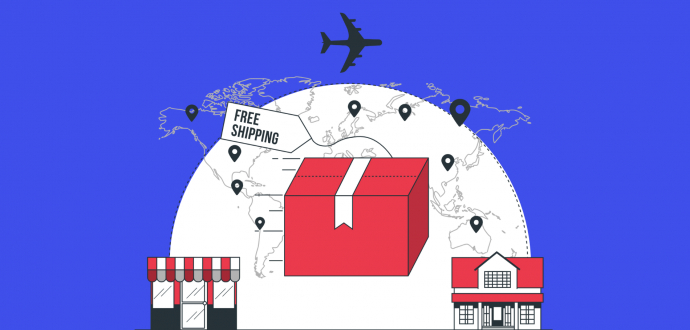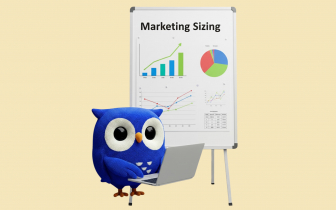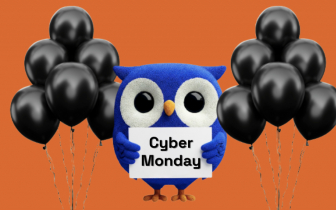Understanding Distribution Channels: What Every Business Should Know

Every business needs a reliable way to get its products and services in front of the right audience. After all, a brand is only really successful when it nails that product-to-user path in such a way that it adds value to its customers.
But how do you ensure this? Two words — the distribution channels.
Basically, they determine how your clients get your products and who you affiliate with to make this possible.
If you are already making sales, then you already have at least one channel of distribution in place. Is it the right one, though?
After reading this guide, you will have it all figured out. So, let’s get right into it.
What is a distribution channel?
A distribution channel is used to describe the journey or path your products/services take from the point where they are manufactured/created to the customer’s doorstep.
You can think of it as a relay race where the product passes through different hands, like a baton, until it gets to the final destination.
So, if you bought the last iPhone 16, whether you ordered it directly from the Apple website or, say, went to your cellular network carrier, you’ve interacted with Apple’s distribution.
Source: FourWeekMBA
As you see, marketing distribution channels can be different depending on the factors at play. We’ll check all the different types of distribution options in detail further below. So, no need to stress just yet!
If you really think about how Apple sells its products, you can spot several channels:
- Online store,
- Physical stores,
- Cellular network carriers,
- Wholesalers,
- Authorized resellers, etc.
Is this limited to physical products only?
While it is quite widespread doubt, distribution isn’t limited to physical products alone. They also apply to SaaS, all types of digital products, and even services.
Of course, you won’t use retailers and resellers in most cases, but you can deliver your “non-physical goods” through streaming platforms, app stores, partners, social media, or even your website that is optimized for SEO and a good user experience.
And when it comes to issues, they aren’t limited to physical product distribution lines either. You can also experience some challenges with a service-based company, whether that is delivering a guest post service, providing virtual assistance, organizing events, etc.
For example, if your main distribution channel is organic traffic (SEO), and then, out of nowhere, your traffic drops because of a Google update, this channel will be disrupted. This will obviously lead to a sales decline. The same can happen to other channels as well (more on that later).
What makes distribution channels different from a supply chain?
That’s a good question, as it’s easy for some people to mix up the two.
Distribution focuses solely on how to get a product to your customer. At the same time, a supply chain covers many more processes — from getting the raw materials for the products, manufacturing them from the raw materials, and then making sure they end up with the right customer.
If distribution is a relay race in an Olympic game (a small part of the game), then the supply chain is the entire Olympic game.
What are its main components (intermediaries)?
There are many distribution intermediaries (aka key players) who help make the process move smoothly like a well-oiled machine. Their role is to help get the goods along the line till they get to the customers. These intermediaries include:
- Retailers. These are the ones who sell directly to the end user. It doesn’t matter whether they’re operating from a brick-and-mortar store or from their Etsy shop.
- Wholesalers. People who buy in bulk and then sell to retailers (often at a discount) are wholesalers. Basically, they are the middleman between the manufacturer and the retailer.
- Agents. These are people who help producers sell to direct customers in return for a commission on their sales.
- Distributors. The distributor basically gets the product from the manufacturer and sells it to the end user.
- Brokers. They perform the same function as an agent on behalf of the company but on a short-term basis. They also get commissions.
- Sales teams. These are company representatives who help generate leads, improve customer-brand relationships, close deals, and more.
- Resellers. They buy straight from the manufacturers or the distributors and then resell the products at a higher price.
- Catalog. This probably made you think of when an old-timey person sells products out of a printed brochure and gets a commission based on sales made. But the same thing still happens today, and tons of businesses like the Hammacher Schlemmer use both printed and online catalogs.
Source: Hammacher Schlemmer
But why is channel management important for successful marketing? That’s exactly what the next section is all about.
What makes it so important?
Marketing distribution channels are very important and can actually impact how successful your market strategy is going to turn out.
- It serves as a bridge between your business and your customers — this way, your products/services get to the people who need them, and you make good sales.
- When done right, it gives you opportunities to break into new markets and reach more people with your products.
- Helps you improve customer satisfaction rates.
- An efficient channel of distribution in marketing can give you a competitive edge and allow you to dominate the market while saving costs.
- Having multiple channels actually protects your business from risks in the event of one channel going down.
That’s why if anything happens to that bridge, and there’s no way for your products or services to get to the customer, then this is going to affect your sales rates.
If the issue is not fixed on time and goes on long enough, forcing your customers to find alternatives, it might take years to recover. So, most business owners understand the gravity of this and seek new ways to quickly address any troubles with their distribution.
Even better, you should have plans in place to minimize the risks altogether. And if unavoidable, you have to create an alternative way of marketing and shipping your products when needed.
Types & their pros and cons
All channels of distribution can be categorized into one of these three types:
Direct distribution channel
Source: Starlink
The direct distribution channel is straightforward — the company connects directly to the consumers. A perfect example is Starlink, where customers can directly order through the website or through a company-owned store rather than having to go through a reseller.
Other companies that use this method include Apple, Walmart, Amazon, etc.
Pros:
There are several advantages to the direct channel of distribution:
- It allows you to offer lower prices since you don’t have to pay any middleman.
- You get to maintain greater control over your brand marketing messages.
- Since you communicate with the customers directly, you get direct customer insights that will help you better manage customer experience.
- It takes less time to adapt to any shift in the market.
Cons:
On the flip side of the coin, you might have to deal with some downsides:
- Higher costs as you’ll have to manage logistics, do additional market research and even invest in infrastructure all on your own.
- Your reach could be affected since you are only able to use a few options (all company-owned) compared to working with agents, brokers, etc.
Indirect channel
Source: Sephora
The indirect channel of distribution is the opposite of the direct channel (surprise-surprise). Here, you get many middlemen involved in getting the products from the point of manufacture to the customer.
Your favorite beverage is probably a perfect example of this. It has gone through different hands (distributors, wholesalers, and retailers) before it reaches you at the restaurant or ends up in your fridge.
Many beauty brands or food companies, for example, also use indirect distribution. Think of Hershey, Pepsi, or Maybelline.
Pros:
On the pro side of this tactic, you get:
- Broader market reach.
- Reduced logistical burden and costs since there are others along the chain to handle that for you.
- More customers and marketing (since the intermediaries are also able to reach more people).
But what is one disadvantage of indirect distribution channels? Well, we’ve got a few for you.
Cons:
It’s not all rosy on this side, as there are several potential downsides:
- Less control over costs and branding message (your message might be diluted before it gets to the final customer).
- Limited direct interaction with the customers, meaning that your insights are not direct, and this can affect the overall customer experience.
- The costs of paying intermediaries may rest in your profits.
Hybrid distribution channel
Still, weighing the direct vs. indirect distribution types? Then, maybe the hybrid model is a perfect pick for you, as it is a balance between the direct and indirect solutions.
Basically, it means combining both of these strategies—having middlemen involved while maintaining direct customer interaction.
This is very common as a lot of manufacturers sell directly through their websites but also use authorized distributors to get the product to the end user.
Some businesses that are great hybrid distribution channel examples are sports brands like Puma, Nike, etc. You know that these brands use their own websites to sell directly to customers.
Source: Puma
Yet, apart from their website, they also partner with numerous retailers, e-commerce platforms, and multi-brand stores.
Source: Shoebacca
Pros:
You get the best of both worlds when you use this tactic, including:
- Many different ways to increase your market reach and get to a lot more customers.
- Lower costs.
- More opportunities to make sales, which means more profits and growth.
- This tactic aligns better with different customer shopping preferences, allowing you to key in whatever the customer is likely to choose.
- You have a stronger market advantage and presence.
Cons:
Still, if you decide to use this strategy, then be prepared for:
- Higher costs since you are leveraging many channels at the same time — probably using many marketing tactics to hype your products or services and build your online presence.
- Less control over some aspects of your brand marketing as each channel might adapt the message or even prices to suit their audience, which could water down your message and confuse your clients.
- Things can get really complex quickly since you have a lot of parts moving at the same time.
- It might become a struggle to decide how to spread your budget and other resources. Which channel deserves more funding, and how do you come to your final decision?
Examples of how this works in marketing and SEO
The success of your distribution strategy is tied to your marketing and SEO skills. What does that even mean?
Well, marketing and SEO play a direct role in how many customers you are able to reach and get them to engage. Let’s consider real-life examples of brands that were able to pull this off well.
Lululemon
Source: Lululemon
Lululemon is a pretty big name in the activewear niche, and its success can be traced to its marketing and distribution strategy.
They definitely know how to use SEO to create a strong online presence and online community of people with shared interests — healthy living. But more than that, their strategy is a mix of:
- Targeting high-traffic top-of-the-funnel keywords like “at-home fitness,” “women’s leggings,” “sales,” etc. Today, they rank pretty high for these terms and pull a lot of organic traffic, too.
Source: Ahrefs Traffic Checker
- Using company-owned retail stores as well as direct-to-consumer sales points like online stores and wholesale franchises to get the products to the end customers.
- Getting staff and local ambassadors onboard to connect better with the community and get more people moving.
- Starting social media campaigns like the #thesweatlife.
Source: Instagram
- Leveraging influencer marketing across several SM channels like YouTube, TikTok, Instagram, Facebook, etc. to reach more audiences.
- Having their affiliate program to attract new loyal customers.
Source: Lululemon
- Using personalized emails to keep customers engaged and encourage them to return for more purchases. In some cases, you get a discount for signing up for the emails, which is another big incentive.
Source: Lululemon
All of these examples point to Lulemon using a mix of direct (SM, website, emails) and indirect (influencers, affiliates, etc.) distribution channels in marketing to push their products to as many people as possible.
Coca-Cola
Source: Coca-Cola
A lot of blogs like to include Coca-Cola when discussing distribution and marketing strategies, and that’s because it’s a global business with a local presence almost everywhere you go.
They record 1.9 billion products delivered daily, which is no small feat. So, what does their strategy look like?
Coca-Cola is a perfect example of an indirect distribution method in action. Of course, they have their own store, but it doesn’t make most of their sales, as you can imagine. It serves more as a marketing tool than a direct distribution channel (you’ll see why below).
Yet, their main focus is their sales partners. The company works with more than 250 bottling companies around the world, some of which operate independently (i.e., they do not own or control all of their bottling partners).
Where they have partners, Coca-Cola refrains from selling to other third parties, allowing their partners exclusive control over that region.
They engage in many social media campaigns and ad campaigns launched by their partners to help promote their products.
In 2019, they even spent over $4 billion in promotional campaigns with their partners who supply the products to wholesalers, local retailers, and so on down the chain.
So, to break it down, Coca-Cola uses a variety of tactics, including:
- Partnering with bottling companies and selling to large retailers globally, enabling them to reach people even in remote areas.
- Creating localized SEO-friendly content about their sustainability projects in local communities. While this doesn’t sell their product directly, it creates goodwill toward the brand.
Source: Coca-Cola
- Building engaging marketing campaigns with catchy slogans that are popular with the younger crowd and encourage people to buy Coca-Cola and share, like the #shareacoke.
Source: @Coca-Cola on X
- Using seasonal marketing campaigns that get people to associate the product with festive times. As you can imagine, this improves their sales through all the indirect channels.
Source: Coca-Cola
- Having their own store with collectibles, apparel, etc. This is a small part of their direct distribution. Yet, of course, as we’ve mentioned before, they don’t rely on this tactic.
Source: Coca-Cola
- Having constant collabs with different brands, whether it’s Converse, Crocs, or Herschel. This boosts both direct and indirect channels.
Source: Coca-Cola
- Offering several customization options to generate even more buzz around their product. This is another way of integrating that direct distribution into their model.
Source: Coca-Cola
- Making use of influencer marketing in each region, which helps the consumer resonate with the brand message.
All in all, there’s a lot to learn from their distribution channel strategy, whether you are just starting out or already a seasoned marketer.
How to choose the right channels for your business
Now that you know everything about the different distribution models and what makes each one special, the next step is figuring out how to get in on the action. Here are our tips:
Research and benchmark
We've seen some great examples, but what makes them so good is that they understand their market, audience, and competitors and know how to leverage their strengths.
If you want to achieve the same results, you are going to have to put in a lot of time and energy into research as well. So, you want to look closely at your competitors and compare how your products/services stack up against theirs.
Do they have a better distribution method than you? If so, learn from them. By the end of your research and benchmarking process, you should have enough data to move on to the next step.
Define your goals and assess your resources
The distribution strategy you choose really depends on what your products or services are, your goals, and even the resources you have to work with. Why? That’s because distribution channels are not one size fits all.
So, first, define your goals clearly — whether that is to increase and maximize profits or to quickly penetrate new markets. This will help you decide how much you’re willing to invest to improve your distribution and what infrastructure to put in place.
Then, map out the best options that match your business model. This might mean trying referral marketing, collaborating with bloggers, or using guest post services to get dofollow backlinks — whatever makes sense for your brand.
Weigh the pros and cons
One distribution channel can be more cost-intensive than the other. In addition to this, they don’t all carry the same risks and benefits.
So, carefully consider the pros and cons of each and what risk you are willing to take before making any form of commitment.
For example, fresh farm produce that goes bad quickly will probably need a channel that is quick and ensures that it gets to users before it goes bad, so a direct channel marketing strategy might be easier. But it can be different if you have great partners.
Keep in mind that any type of distribution you choose should fit into your daily routine and make your workflow easier (not more complicated).
Prioritize the customer
At the end of the day, the strategy you choose should make the customer feel heard and valued. If it creates an extra layer of hoops for them to jump through before they can order your products or services, that won’t help.
Instead, ensure that it creates easier accessibility, so if they prefer to shop online or walk in stores, make that available. You can even create a survey to get feedback that can help you make the right choice and improve existing channels.
This would mean looking for ways to ensure that the end user gets your products in great condition and as quickly as possible.
Also, be careful not to overinvest in one channel at the detriment of the other, creating conflict between channels.
Conclusion
Distribution channels are crucial for every business as they determine how you can make your sales. So, it’s important for every business owner to understand how they work and what it takes to get the most out of them.
Use the steps we have outlined here to help you make the right choice. Even then, keep monitoring each channel to see how everything pans out and experiment if necessary.
With good research and the right investments, your channels will help drive business growth, making it easier for you to achieve your marketing goals.








